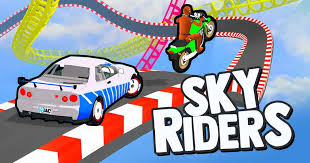The video game industry has always been at the forefront of technological innovation, and artificial intelligence is proving to be one of its most transformative forces yet. From streamlining development processes to creating more immersive gaming experiences, AI is fundamentally changing how games are made and played. This revolution is not just about making games more sophisticated—it’s about reimagining the entire creative process.
The New Era of Procedural Content Generation
One of the most significant impacts of AI in game development is the evolution of procedural content generation (PCG). While procedural generation has existed for decades, modern AI algorithms have taken it to unprecedented levels of sophistication. Games like No Man’s Sky demonstrate how AI can create virtually infinite universes with unique planets, ecosystems, and creatures, all generated algorithmically.
Key Applications of AI-Powered PCG:
• Terrain and Environment Generation – Creating vast, unique landscapes with realistic geography and ecosystems • Asset Creation – Generating textures, 3D models, and visual effects automatically • Quest and Mission Design – Crafting dynamic storylines and objectives based on player progress • Dialogue Writing – Producing contextual conversations and narrative branches • Music Composition – Creating adaptive soundtracks that respond to gameplay • Level Design – Building balanced, engaging game levels with proper pacing and difficulty curves
Machine learning models now analyze existing game assets and level designs to understand patterns and create new content that feels handcrafted. Developers can now prototype entire game worlds in days rather than months, allowing for more experimentation and iteration during the creative process.
Transforming Non-Player Character Behavior
Perhaps nowhere is AI’s impact more visible to players than in the behavior of non-player characters (NPCs). Traditional NPCs followed rigid scripts and predictable patterns, but AI is enabling characters that adapt, learn, and respond to player actions in surprisingly human-like ways.
Modern AI techniques, including neural networks and reinforcement learning, create NPCs that can develop their own strategies, remember past interactions, and even exhibit emotional responses. Games like Middle-earth: Shadow of Mordor introduced the Nemesis System, where enemy characters remember their encounters with players and evolve accordingly. This creates unique narratives that emerge organically from gameplay rather than being pre-scripted.
The integration of large language models is taking NPC interactions even further. Characters can now engage in natural conversations, understand context, and provide responses that aren’t limited to pre-written dialogue trees. This technology promises to make game worlds feel more alive and responsive than ever before.
Accelerating the Development Pipeline
AI is dramatically reducing the time and resources required for many aspects of game development. Here’s how AI tools are transforming traditional workflows:
Traditional vs. AI-Enhanced Development
| Development Aspect | Traditional Approach | AI-Enhanced Approach | Time Savings |
|---|---|---|---|
| Texture Creation | Manual painting (2-3 days per texture) | AI generation + artist refinement (2-3 hours) | 85-90% |
| Bug Testing | Manual playtesting (weeks) | Automated AI testing (hours) | 95%+ |
| Animation | Keyframe animation (1-2 weeks) | AI motion synthesis (1-2 days) | 80% |
| Level Design | Manual placement (days) | AI-assisted generation (hours) | 70% |
| Asset Variations | Individual creation (hours each) | AI variation generation (minutes) | 90% |
| Localization | Manual translation (weeks) | AI translation + review (days) | 60% |
Key AI Development Tools:
- Texture Generation – AI upscaling, style transfer, and seamless texture creation
- 3D Modeling Assistance – Automated mesh optimization and procedural modeling
- Animation Systems – Motion matching, physics-based animation, and facial capture
- Quality Assurance – Automated playtesting, bug detection, and balance analysis
- Art Style Transfer – Converting concept art into game-ready assets
These systems learn from each playthrough, becoming more effective at finding problems and even predicting where issues are likely to occur.
Personalizing Player Experiences
AI enables games to adapt dynamically to individual players, creating personalized experiences that respond to skill level, play style, and preferences.
AI-Driven Personalization Features:
• Dynamic Difficulty Adjustment (DDA) – Real-time modification of game challenge based on player performance • Behavioral Analysis – Tracking player patterns to predict preferences and optimize engagement • Content Recommendation – Suggesting quests, items, or paths based on play history • Adaptive Storytelling – Modifying narrative elements to match player choices and interests • Customized Tutorials – Adjusting learning curves based on player skill demonstration • Emotional Response Monitoring – Using biometric data to gauge player engagement and stress levels
This personalization extends to content recommendation and game pacing. AI systems track how players interact with different game elements and can adjust the frequency of certain events, the types of challenges presented, or even the narrative paths available. This ensures that each player’s journey feels tailored to their interests while maintaining the designer’s intended experience.
The Rise of AI-Assisted Game Design
Game designers are increasingly using AI as a creative partner rather than just a tool. AI systems can generate initial concepts, suggest design improvements, and help balance complex game systems. By analyzing data from millions of players, these systems can identify patterns that human designers might miss, leading to insights that improve game design.
Some studios are experimenting with AI that can prototype entire game mechanics or generate rule sets for new games. While these systems don’t replace human creativity, they accelerate the ideation process and allow designers to explore a broader range of possibilities before committing to a particular direction.
Enhancing Visual Fidelity and Performance
AI is pushing the boundaries of what’s possible in real-time graphics. Technologies like NVIDIA’s DLSS (Deep Learning Super Sampling) use neural networks to upscale lower-resolution images in real-time, allowing games to run at higher frame rates without sacrificing visual quality. Ray tracing, once computationally prohibitive for real-time applications, is now feasible thanks to AI-powered denoising algorithms.
Facial animation and motion capture have also benefited enormously from AI. Machine learning models can generate realistic facial expressions and body movements from minimal input data, reducing the need for expensive motion capture sessions while delivering more nuanced character animations.
AI Technologies in Gaming: A Comprehensive Overview
Major AI Technologies and Their Applications
| AI Technology | Gaming Application | Example Games/Systems | Benefits |
|---|---|---|---|
| Neural Networks | Character behavior, graphics upscaling | DLSS, Shadow of Mordor | Realistic NPCs, better performance |
| Machine Learning | Player behavior prediction, balancing | Forza Motorsport, Dota 2 | Personalized experiences, fair gameplay |
| Natural Language Processing | Dynamic dialogue, voice commands | AI Dungeon, Façade | Natural conversations, accessibility |
| Computer Vision | Motion capture, player tracking | VR games, Kinect titles | Immersive controls, realistic animation |
| Reinforcement Learning | AI opponents, procedural generation | AlphaStar (StarCraft II), OpenAI Five | Challenging gameplay, infinite content |
| Generative AI | Asset creation, music composition | No Man’s Sky, Minecraft | Reduced development time, unique content |
| Deep Learning | Texture generation, style transfer | NVIDIA GauGAN, Artbreeder | Rapid prototyping, artistic variety |
Challenges and Ethical Considerations
Despite its benefits, AI in game development raises important challenges:
Industry Concerns:
• Job Displacement – AI automation potentially replacing traditional artist and designer roles • Creative Authenticity – Questions about the value of AI-generated vs. human-created content • Quality Control – Ensuring AI-generated content meets artistic and technical standards • Technical Barriers – High computational requirements and specialized expertise needed
Ethical Issues:
• Data Privacy – Collection and use of player behavior data for AI training • Algorithmic Bias – AI systems perpetuating stereotypes or excluding certain groups • Addiction Mechanics – AI optimization potentially encouraging unhealthy gaming habits • Content Ownership – Legal questions about rights to AI-generated assets • Transparency – Players’ right to know when they’re interacting with AI systems
The use of AI-generated content also raises questions about authorship and creativity. As AI becomes more capable of creating original content, the industry must grapple with questions about ownership, attribution, and the value of human versus machine creativity.
The Future of AI in Gaming
Looking ahead, the integration of AI in game development will only deepen. We’re moving toward games that can generate entirely new genres, create stories that adapt in real-time to player choices, and build worlds that evolve independently of player interaction. Virtual reality and augmented reality experiences will particularly benefit from AI’s ability to create responsive, immersive environments.
The convergence of AI with other emerging technologies like cloud computing and 5G networks will enable new types of gaming experiences. Massive multiplayer worlds with thousands of AI-driven characters, games that continue evolving even when players aren’t active, and experiences that blur the line between game and reality are all on the horizon.
Conclusion
AI is not just changing how games are made—it’s expanding our conception of what games can be. By automating routine tasks, enhancing creative possibilities, and enabling new forms of interactivity, AI is freeing developers to focus on innovation and artistic expression. While challenges remain, the potential for AI to create richer, more immersive, and more personal gaming experiences is undeniable.
As we stand at the threshold of this new era, one thing is clear: the partnership between human creativity and artificial intelligence will define the future of gaming. The games of tomorrow will be shaped not just by the vision of their creators, but by the collaborative potential of human imagination and machine learning. This revolution is just beginning, and its full impact remains to be seen, but it promises to deliver gaming experiences beyond our current imagination.














